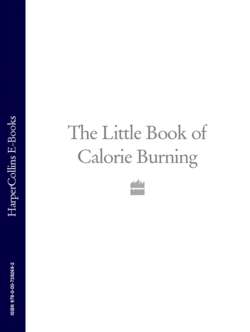Читать книгу The Little Book of Calorie Burning - Литагент HarperCollins USD, Ю. Д. Земенков, Koostaja: Ajakiri New Scientist - Страница 5
ARE YOU A TEENSY BIT PORKY?
ОглавлениеYou may think that you need to go on a diet if you can pinch more than an inch at the waistline, or if you have wobbly chicken wings under your arms – but what you really need is to tone the muscles in those areas without shedding any kilos. The scale doctors use to decide whether your weight is a healthy one or not is called the ‘body mass index’ or BMI – and no, it’s not a brand new kind of performance bike.
To work out your own BMI, you will need: a tape measure, some accurate scales and a calculator. Here’s what to do:
1 Measure your height in metres (for example, 1.64 or 1.70). Don’t guess – it might have changed since the last time you checked it.
2 Use the calculator to multiply your height by itself, e.g. 1.64 × 1.64 = 2.69.
3 Get on the scales, naked, first thing in the morning, and measure your weight in kilograms.
4 Divide your weight in kilograms by the number you arrived at in 2, above. For example, 63 (kg) ÷ 2.69 = 23.4.
5 The resulting figure is your BMI. Now consult the list below to see what it means.
If your BMI is less than 15, you are so underweight that you are seriously damaging your health. There’s no point struggling to reach a size zero if you die of malnutrition in the process. Consult a doctor about the healthiest way to start putting on weight, and ask for advice on finding a sensible exercise routine that will not put too much strain on your body.
If your BMI is between 15 and 18.9, you are classed as underweight. Make sure you eat a good breakfast and two further nutritious meals every day, including plenty of protein, veggies and fibre, if you want to avoid illnesses like osteoporosis (where your bones break easily), alopecia (where your hair falls out) or Crohn’s disease (chronic inflammation of the intestine).
BMI between 19 and 24.9? Congratulations! Top of the class! You are in the perfect weight range for your height and don’t need to gain or lose kilos, although you may have some areas that you consider ‘problematic’. Concentrate on a regular form of exercise that targets your flabbier bits rather than trying to firm them through dieting – it’s much more effective and the results last longer as well.
If your BMI is between 25 and 29.9, this is a bit too high and you need to take action to stop it creeping any higher. You’d be well advised to cut out fatty, sugary foods, cut right back on the booze and start getting an hour’s exercise a day. This can include walking to work, dancing, sex, or anything you like doing that involves moving in an energetic fashion. See pages 46–144 for inspiration.
If your BMI is over 30, you are what is known medically as ‘obese’ and you are putting a real strain on your heart, your joints and virtually every other body system. Contact your doctor for advice on how to lose weight intelligently and don’t even think about those silly fad diets where you only eat grapefruit or pineapple or cabbage soup. You need to get an hour’s exercise a day but this should be supervised by a trainer at least to start with to ensure that what you are doing is safe and sensible.
Your ideal weight will fall within the 19–24.9 BMI category; it should be one at which you feel healthy and which you can maintain by eating three nutritious meals (i.e. not all pizza and crisps) and taking at least 30 minutes’ exercise daily. Sure, you might be able to get down to the legendary ‘size zero’ if you live on lettuce leaves and exercise vigorously for most of your waking hours, but you will be fighting an ongoing battle with your biology – and biology always wins in the end.
